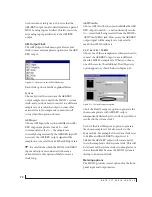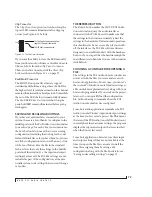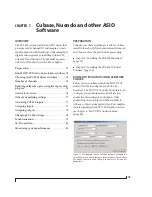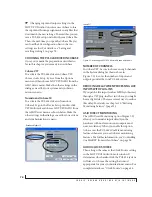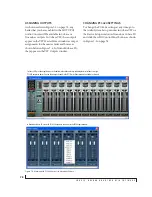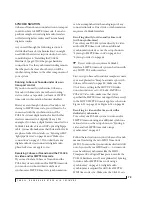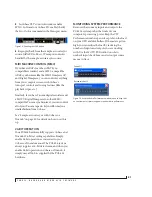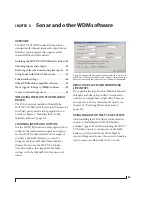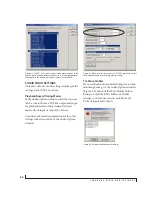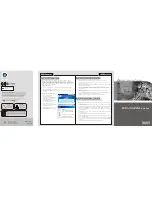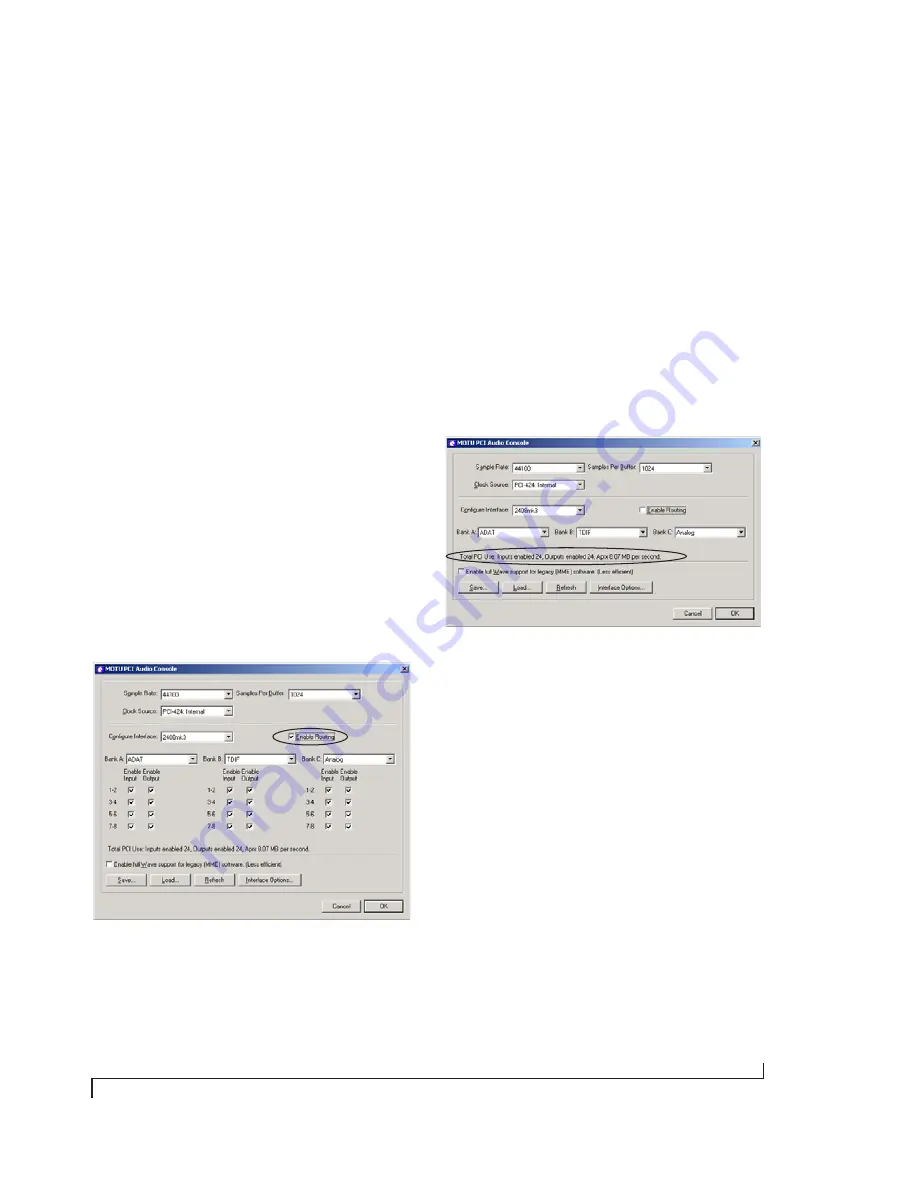
M O T U P C I A U D I O C O N S O L E
69
Disabling banks does not affect CueMix DSP
When you disable a bank as shown in Figure 6-4
above, it only affects PCI bus routing to the
computer and your host software. Disabling a bank
here has no effect on CueMix DSP mixing.
Therefore, feel free to disable banks that you don’t
need for your software, even if you are using them
for CueMix DSP live mixing and monitoring.
ENABLE ROUTING
The Enable Routing check box expands the
window to display each individual input and
output pair. Each check box represents the
availability of that input or output pair to audio
software running on your computer. Check the
Enable Input
check box to make it available as
inputs to your audio software; check the
Enable
Output
check box to make the output pair available
to your host software. When a box is checked, the
input or output pair will appear in the input or
output source menus in your host audio
application. When it is unchecked, it won’t. But as
described above, unchecking inputs has no effect
on CueMix DSP mixing and monitoring.
Figure 6-5: Check the ‘Enable Routing’ check box (circled above) to
expand the window. You can then disable (or enable) individual input
and output pairs.
☛
Remember: ADAT and TDIF banks show four
channels (instead of eight) at sample rates higher
than 48 kHz.
PCI USE
Enabled banks (or individual inputs and outputs)
take up a small portion of your computer’s
processing power. And while the amount is quite
small for individual I/O pairs, a core PCI-424
system lets you enable up to 24 inputs and outputs
at a time (a total of 48). An expanded PCI-424
system with four interfaces lets you enable up to 96
inputs and outputs at a time (a total of 192). To
conserve your computer’s processing power, only
enable banks (or individual inputs and outputs)
when you are actually using them. Otherwise, leave
them unchecked.
Figure 6-6: Keep an eye on the PCI bus resources when using two or
more audio interfaces.
The
PCI Use
status display tells you the
approximate PCI bandwidth being used by the
PCI-424 card for the currently enabled inputs and
outputs. This display is mostly intended for
expanded PCI-424 systems, which push the limits
of the PCI bus itself. A higher number will alert you
that there are a significant number of inputs and
outputs enabled, perhaps including the ones you
are not currently viewing.
While the theoretical maximum PCI bandwidth is
132 MB per second, there are no hard and fast rules
for how much bandwidth is actually available on
any given computer. Many factors come in to play,
including the efficiency of the bridge chip that
controls the PCI bus and the number of other PCI
devices on the bus competing for bandwidth.
Practically speaking, most of today’s personal
Summary of Contents for PCI-424
Page 35: ...6 ...
Page 43: ...14 ...
Page 45: ...16 ...
Page 53: ...P A C K I N G L I S T A N D P C S Y S T E M R E Q U I R E M E N T S 24 ...
Page 83: ...I N S T A L L I N G T H E P C I 4 2 4 H A R D W A R E 54 ...
Page 103: ...M O T U P C I A U D I O C O N S O L E 74 ...
Page 111: ...C U B A S E N U E N D O A N D O T H E R A S I O S O F T W A R E 82 ...
Page 115: ...S O N A R A N D O T H E R W D M S O F T W A R E 86 ...
Page 119: ...E X P A N D I N G Y O U R P C I 4 2 4 S Y S T E M 90 ...
Page 125: ...R E D U C I N G M O N I T O R I N G L A T E N C Y 96 ...
Page 131: ...C U E M I X C O N S O L E 102 ...
Page 148: ...6 ...
Page 156: ...14 ...
Page 158: ...16 ...
Page 166: ...P A C K I N G L I S T A N D M A C I N T O S H S Y S T E M R E Q U I R E M E N T S 24 ...
Page 194: ...I N S T A L L I N G T H E P C I 4 2 4 H A R D W A R E 52 ...
Page 230: ...A U D I O D E S K 88 ...
Page 246: ...E X P A N D I N G Y O U R P C I 4 2 4 S Y S T E M 104 ...
Page 258: ...C U E M I X C O N S O L E 116 ...


















